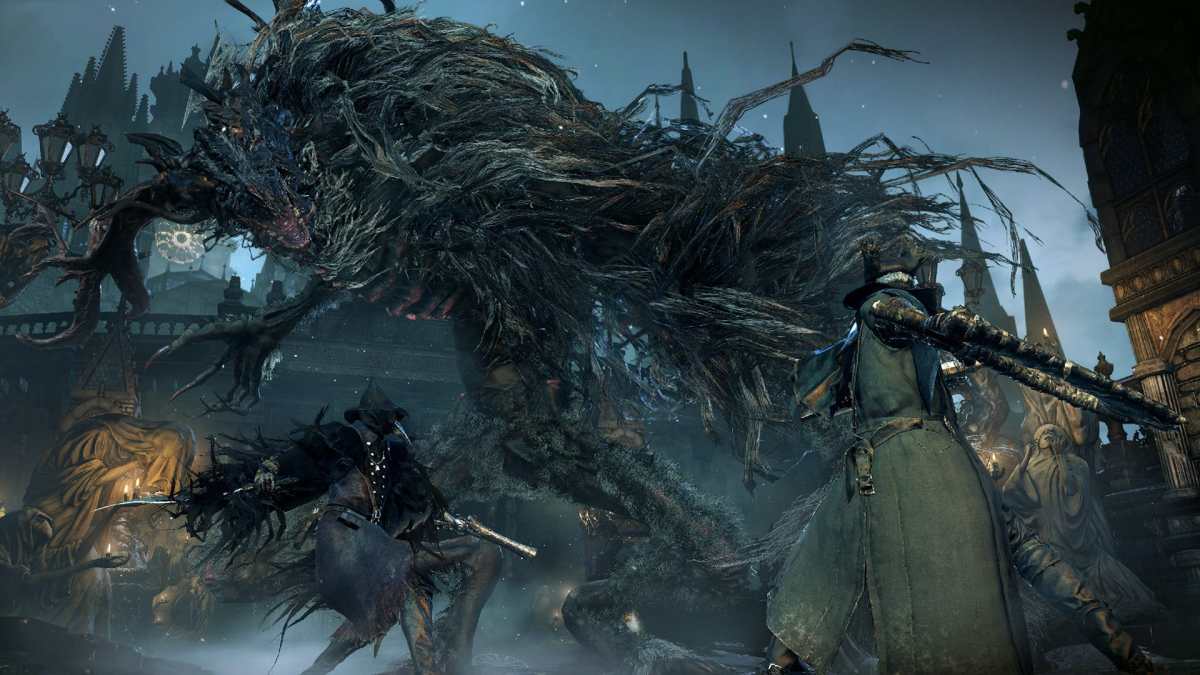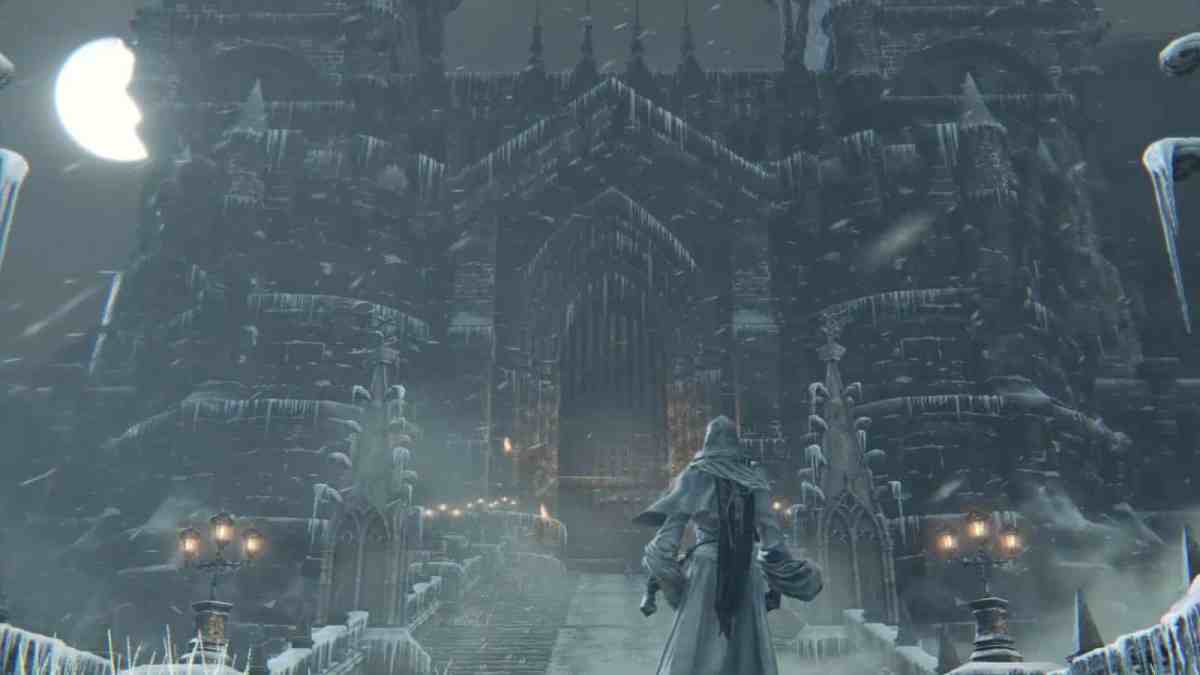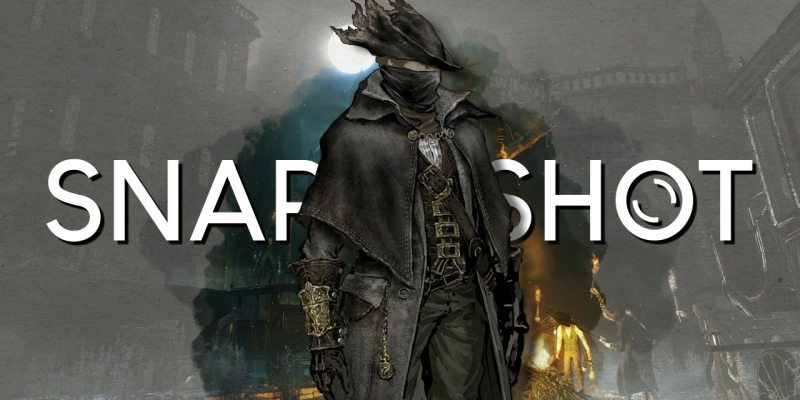This article contains spoilers for Bloodborne and especially Cainhurst Castle.
The night of the hunt has been long and without respite. We’ve spent hours wading through the blood and crunching through the bones of Yarnham. We’ve seen men transform into beasts and caught glimpses of eldritch horrors that words can’t even begin to describe. We’ve fought, died, fought, and died again in order to slowly unravel the mysteries that lay beneath the haunted moonlight. So it may seem strange that after all of this, the standout moment of From Software’s 2015 masterpiece Bloodborne begins with us stumbling upon a tattered summons, cordially inviting us to visit a place called Cainhurst Castle.
From Demon’s Souls to Sekiro: Shadows Die Twice, singling out any one of From Software’s games from the past decade is a tough enough task, let alone choosing a single moment from one of them to highlight. My focus would probably change daily, but today, it’s the precarious journey to Cainhurst Castle, which combines tense gameplay, gorgeous design, deep lore, and a fantastic boss encounter into a single example that shows why Bloodborne is an undisputed monument.
Like most things in From Software’s games, the road to Cainhurst Castle is treacherous. In fact, much like the iconic Painted World of Ariamis of the original Dark Souls, this area is completely optional and can be easily missed entirely. After navigating the torchlit arteries of the Forbidden Woods and stumbling across a mass grave housed deep beneath the city, we find ourselves back in the dilapidated ruins of Iosefka’s Clinic, the very same clinic where we awoke into this nightmare at the start of the game — only to be quickly mauled by a werewolf. Again, classic From Software. But this time, there’s a note laying on a bloody gurney that’s set to change the trajectory of our journey.
What makes finding the Cainhurst Summons in the clinic all the more unnerving is that description reads, “An old blood-stained summons, inviting an honored guest to the forsaken Castle Cainhurst. Rather bafflingly, it is addressed to you. Do not hesitate; the stagecoach leaves from Hemwick crossing.” So much of the fantastic lore, texture, and story details in these games are found within the item description, and here is no exception. This optional scrap of paper hints that a trip to Cainhurst Castle is why our Hunter finds themselves in the middle of this living hell in the first place.
And so we follow the instructions on the invitation, hacking our way through the viscera of countless beasts, including the Witch of Hemwick, a gnarled wretch covered head to toe in eyeballs for a reason that will be familiar to those who pay attention to those vital item descriptions. We finally make our way to an obelisk jutting out of the ground near the aforementioned crossing when our trip to Castle Cainhurst begins with a chilling cutscene.

Throughout our time in the game, we’ve passed countless wrecked carriages strewn about Yarnham, so to finally see a functional one approaching behind a pair of night-black horses is a bit surreal. The door eerily creaks open on its own, revealing an empty cabin beckoning us into the unknown. With obvious shades of Jonathan Harker’s trip high into the winding mountains of Transylvania in Bram Stoker’s Dracula, we step into the carriage and close the door behind us, journeying off into the unknown night. Luckily for us, unlike Harker, we have all manner of guns, molotov cocktails, and a cane that transforms into a whip.
That whip bit is important given the tone of what happens next. Amidst a violent blizzard, our chariot arrives at a structure that looms over our Hunter menacingly. The camera slowly pans up, showing how small we are in the face of something so ancient and foreboding. The words “Forsaken Castle Cainhurst” appear as we’re placed at the steps of the silent monolith. Rather bafflingly, the carriage now lies behind us, destroyed and completely frozen over. The horses have been dead for what seems like quite some time, and the bridge we arrived on has long since crumbled. Wherever we are seems to exist outside of the time and space of where we’ve journeyed thus far. At this moment, only one thought comes to mind: What a horrible night to have a curse.
Though there have been many attempts, in my opinion, we’ve never gotten a 3D Castlevania game that lives up to the quality of its many classic 2D iterations. From 1999’s Castlevania 64 to 2014’s Lords of Shadow 2, the series has always stumbled when trying to reach the third dimension. But this moment in Bloodborne, as the castle hangs over our Hunter who is armed with a whip and ready to take on whatever foul beasts haunt the halls of Forsaken Cainhurst, is the truest 3D interpretation of Konami’s NES classics I’ve ever played.

Cainhurst Castle is one of the absolute finest areas in all of Bloodborne. Battling spider-like creatures engorged with blood across the snowy courtyard of the keep feels remarkably different than anything that’s come before it, while also strengthening the running theme of the consumption of blood playing a vital role in this world. The crowd of human statues carved from stone and the blindfolded ghosts of nobles provide memorable combat challenges while also deepening the game’s lore surrounding the Vilebloods and the conflict between Queen Annalise and the scholars of Byrgenwerth. And of course, the whole thing is capped off with hauntingly memorable and tough-as-nails boss fight against Martyr Logarius, a man we’ve heard quite a bit about up to this point. Having the “Prey Slaughtered” tag finally come up on him was one of the highest achievements the game had to offer.
From Software has made a name for themselves over the past decade by delivering experiences filled to the brim with memorable moments. In terms of boss battles alone, the mere mention of names like Artorias, Slave Knight Gael, or Genichiro Ashina immediately brings forward memories of awe, frustration, and ultimately accomplishment. But the circumstances surrounding the ominous ride to a forsaken place hidden amidst a blizzard delivers an unforgettable moment, expanding upon a vision first presented in the ‘80s.
